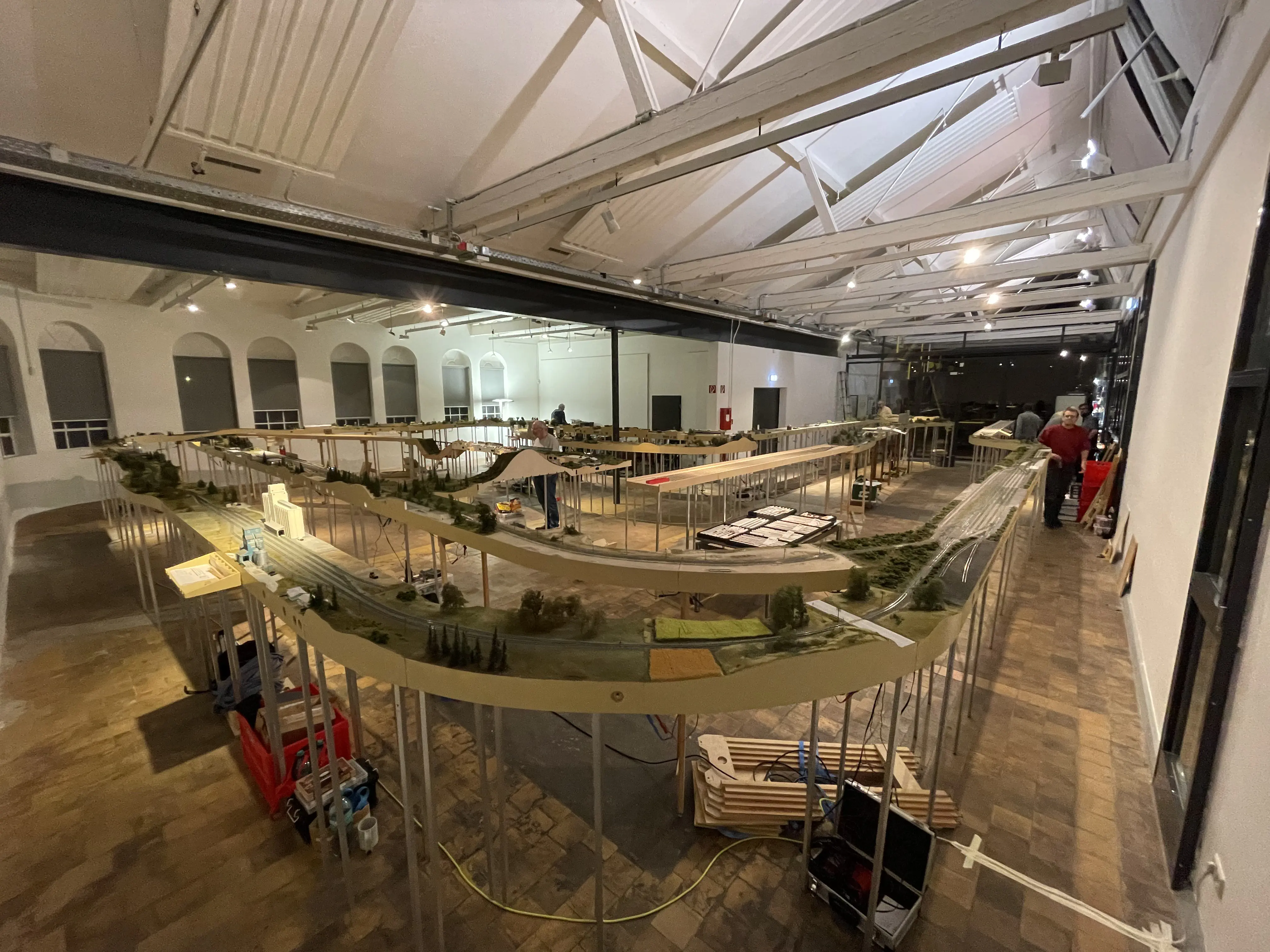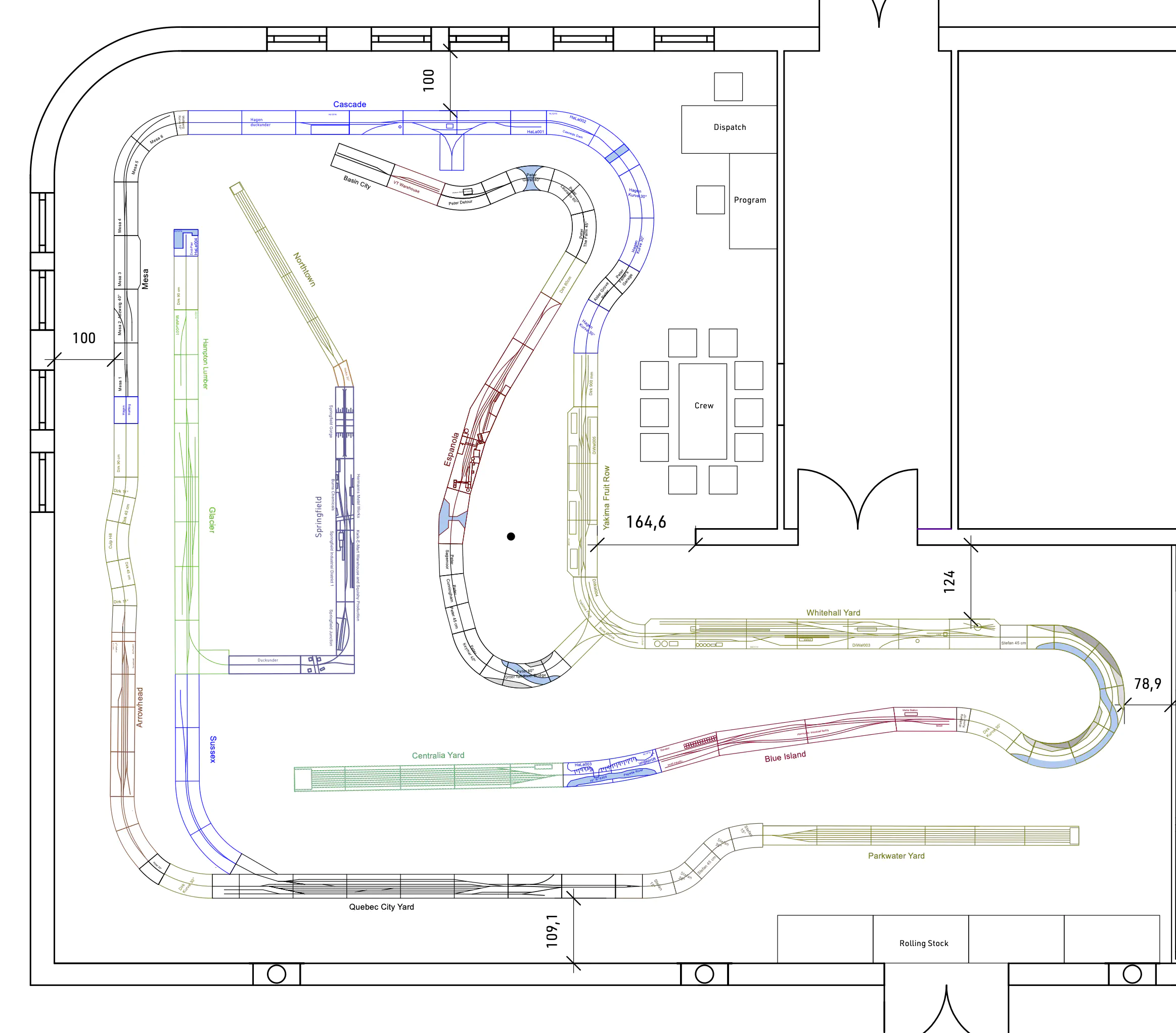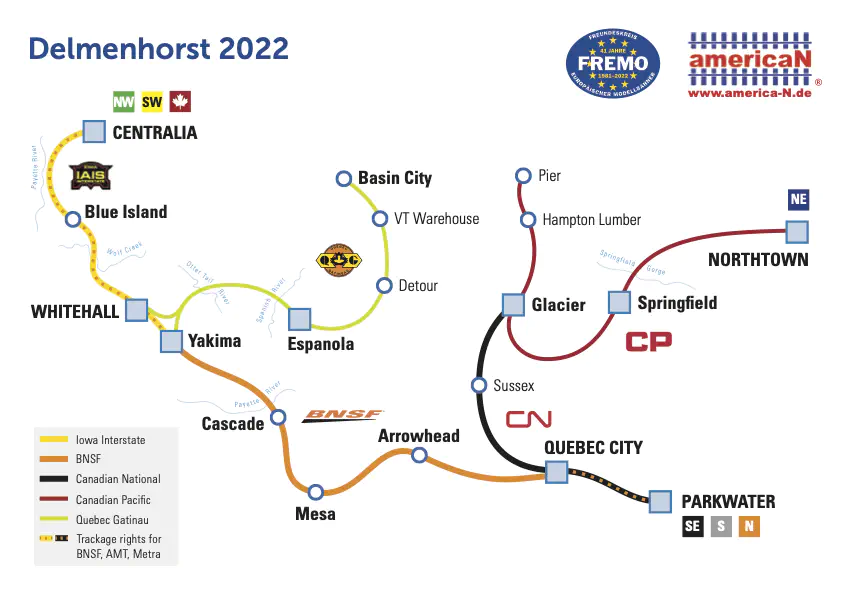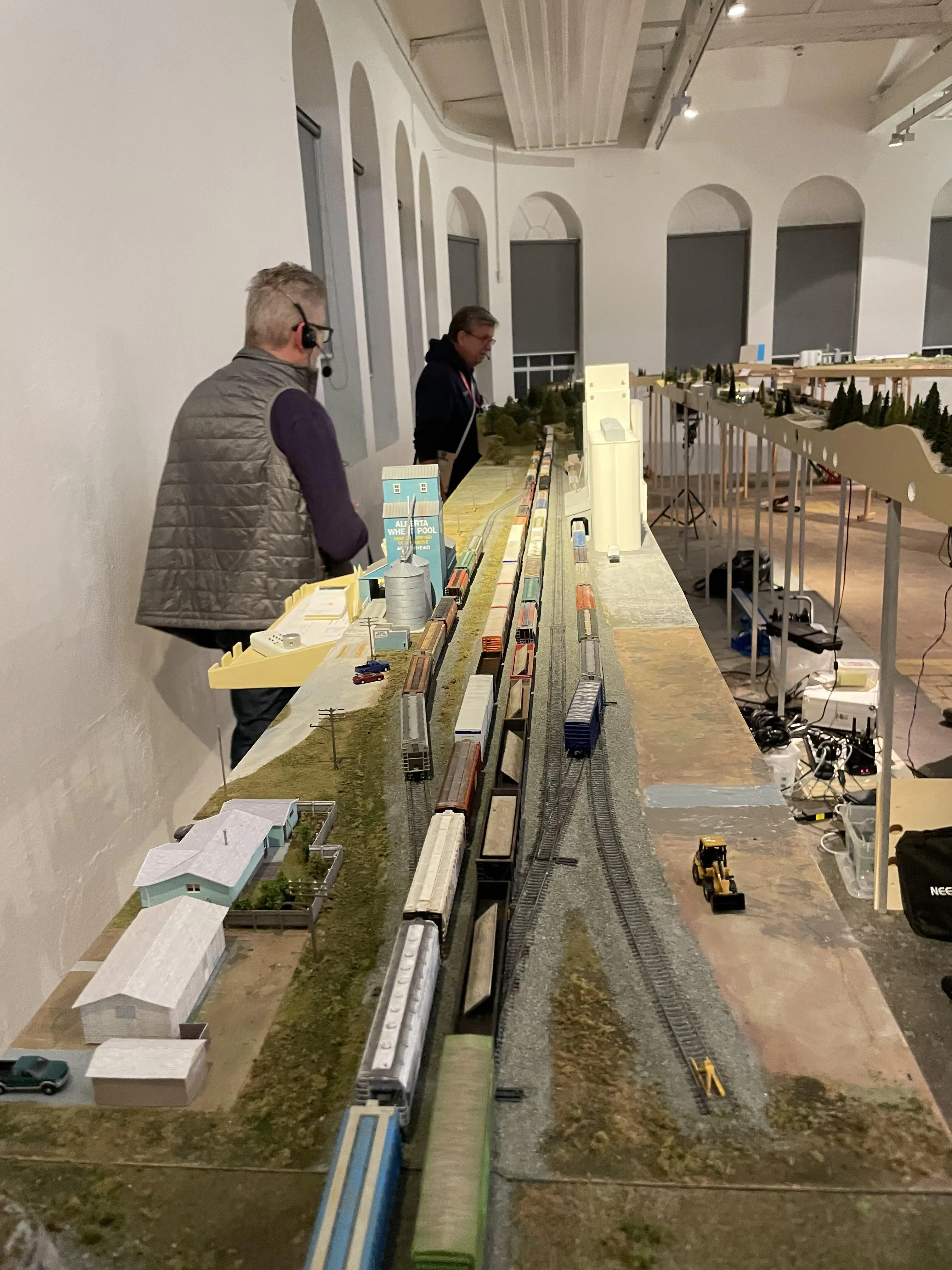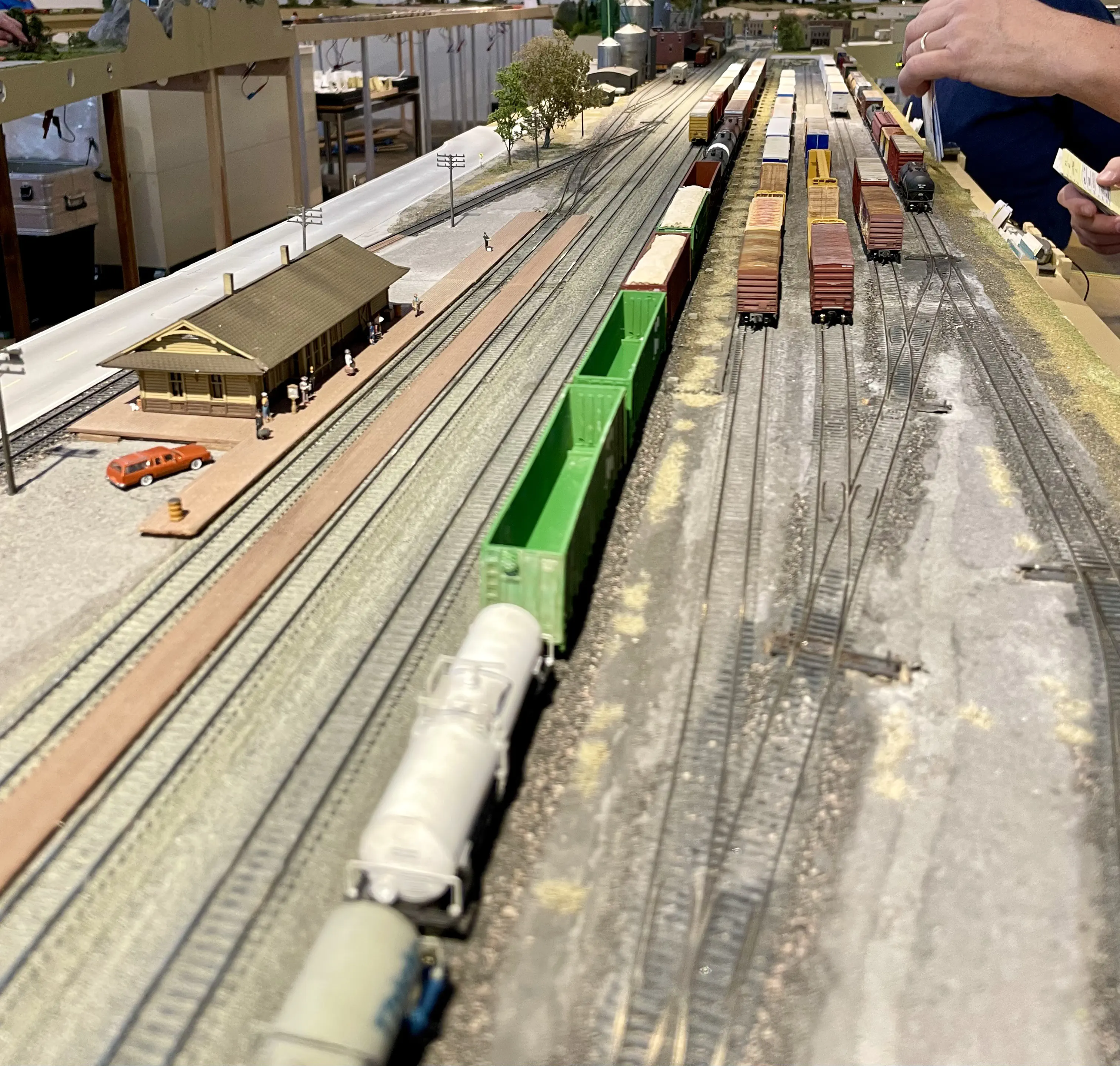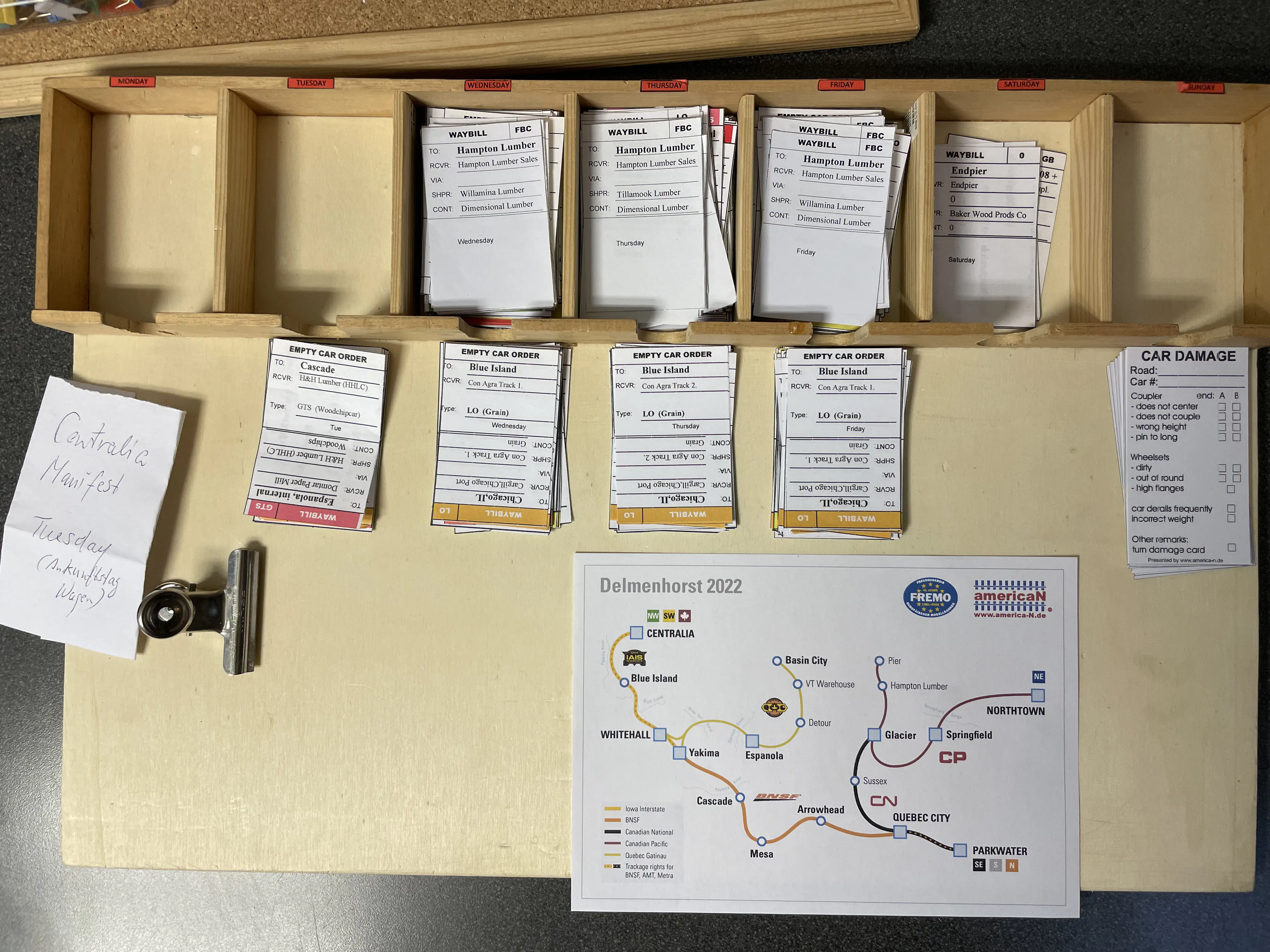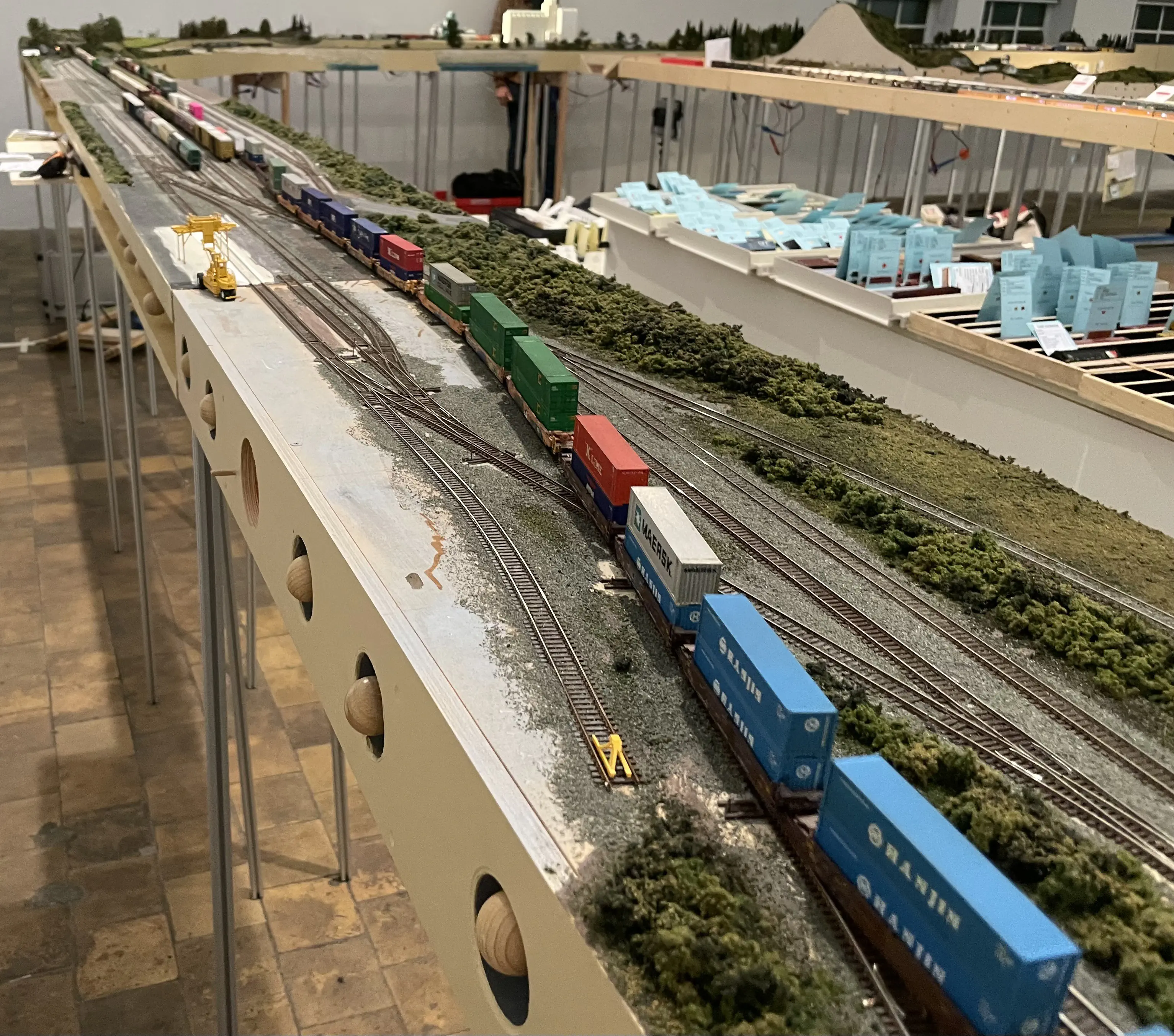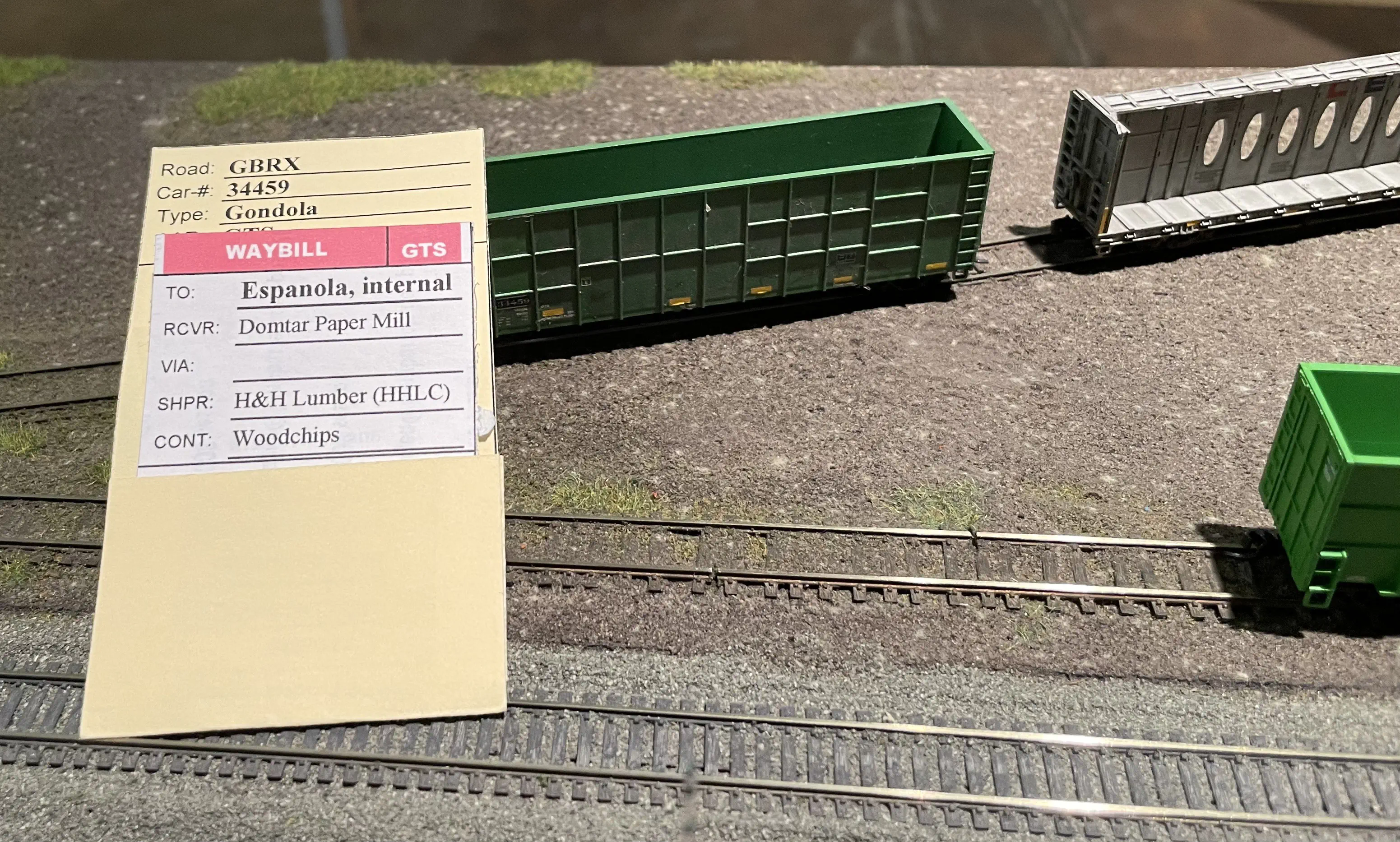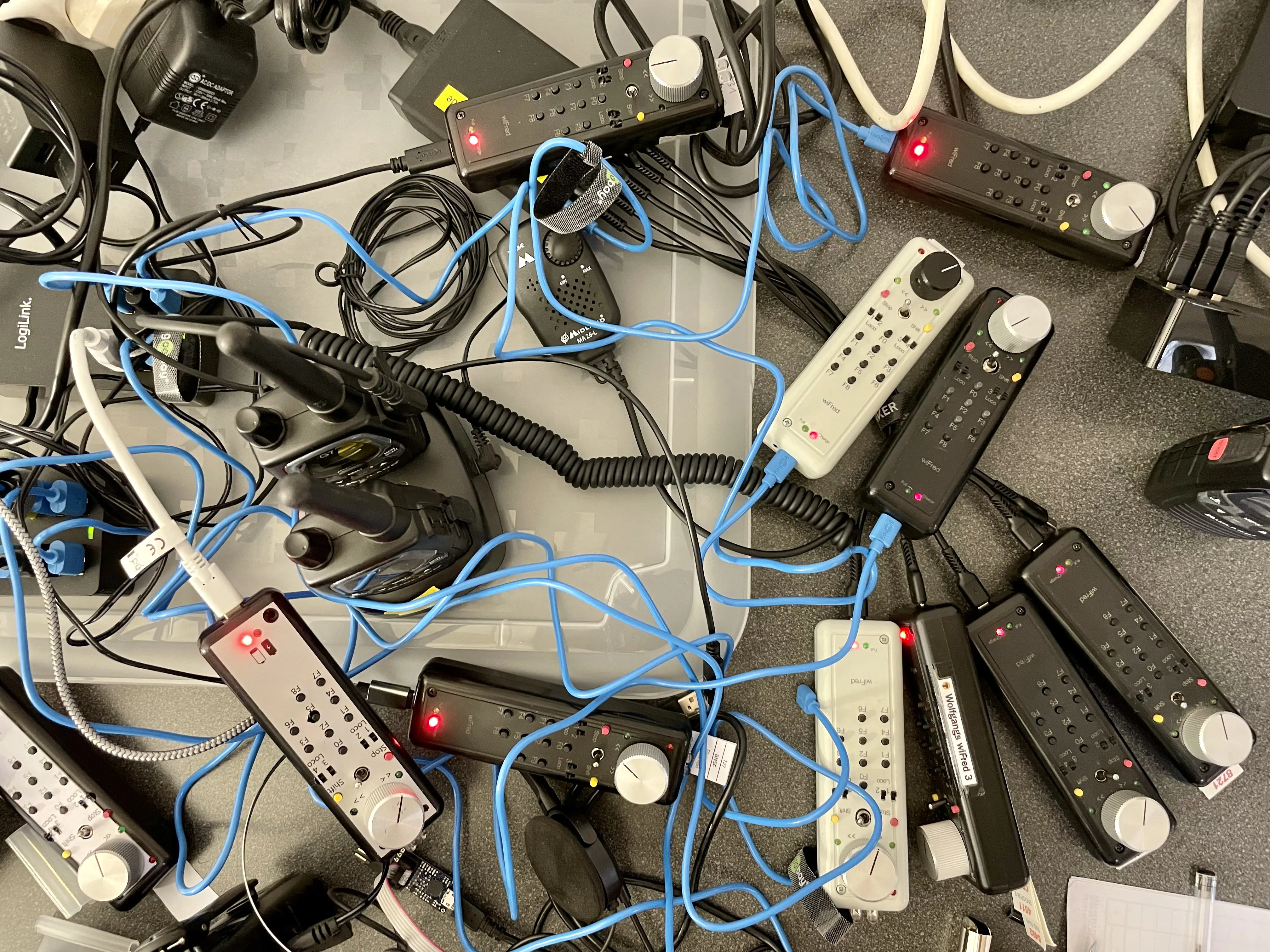FREMO americaN Meet Delmenhorst
Setting up the layout
This year, we had the chance to use a room of the Nordwestdeutsches Museum für IndustrieKultur in Delmenhorst, near Bremen. During the meet there were 11 attendees. We had prepared a plan and a concept for operations to siumlate the traffic around the year 2005.
Unpacking all modules, setting up the layout and installing the loconet wiring for the boosters took about seven hours. As we intended to control the trains wireless, we did not need to install loconet boxes on the modules, only a few long cables were required to connect the seven boosters we used.
After the setup all trains had to be staged for the first session and the spots had to be primed with the sunday-traffic. This took another two hours. Everything was ready when we went to bed, so we could start with the first session on friday morning without further delay.
The Layout
The Layout consists of a 65 m Mainline between two staging yards and was extended by two branchlines of 12 and 20 meters each. So in total we setup about 100 m total length in modules, not including the three staging yards.
Layout overview
The routes should be operated by different railroad companies. The Iowa Interstate Railroad (IAIS) operated the route from Centralia (staging yard) to the Yard in Whitehall. The route between Whitehall, via Yakima, Cascade and Mesa to Quebec City was operated by BNSF. BNSF had tracking rights from Quebec City to the Parkwater Staging yard.
The Whitehall yard was the start of a branchline to the Espanola paper mill and some other small industries, which diverged from the main using the other arm of the Yakima wye.
The diverging route in Quebec City was used to connect the Parkwater staging yard to Glacier to interchange traffic via the Springfield industrial district and to Northtown staging yard.
According to the datasheets of all includied instutries, we expected about 100 inbound and outbound cars per operationg session. We later found, that these numbers might not exactly match the actual volume of traffic.
Operations
The basics of our operations are described in my article about operations and published featured in the N Scale Railroading Magazine.
Derivations from normal procedures
For this meeting we decided to apply some subtle changes to our operations to shorten the sessions thus enabling us to play more of them. It worked out, but it required some small adjustments and some learning.
Only One Train each
The most significant change was, that we only wanted to run every train once per session. Usually we use a morning manifest and an afternoon manifest, thus the cars are divided between these trains.
For this meeting we only run one manifest and local for each direction. Another alteration was the setup of the locals. The local trains should be already setup when the session start, so they could start immedeately. This tweak made it possible to have more crews on the layout ealier in the session, as the local crews didn`t have to wait for anyone to setup their train.
This lead to some interessting sideeffects. The yards were never empty. During most americaN-Meets I have attended, the yards were nearly empty at the end of a session. Not so much during this meeting.
While playing the tuesdey-session, we had already staged the cars for wednesday. So the manifest delivers cars for the next session to the yards. The yardmasters sent all outbound cars with the manifest, that were received during the last session. They could then start to setup the locals for the next session.
Manifest Trains
For this meeting all inbound and outbound cars ought to be transported by the manifest trains. It was planned to only run a single manifest for each route per session. This resulted in four manifests:
- PaCe: Parkwater to Centralia This train takes all cars from Quebec City to Whitehall and heading to the colors green, yellow and red.
- CePa: Centralia to Parkwater Takes all cars from Whitehall to Quebec City and the colors black and orange
- PaNor: Parkwater to Northtown Takes all cars from Quebec City to Glacier and takes the colors blue and grey
- NorPa: Northtown to Parkwater via Quebec City, takes the colors black and orange
During the meeting we learned, that there were very few cars heading to blue but a lot of cars heading to orange, so we decided to lighten the traffic to Parkwater by moving the destination grey to Northtown.
Local Freights
There were four locals planned for this layout. Working these locals was a quite relaxed job, with some interesting and a few challenging spots, but always managable. The throughtraffic never got too much in the way so it was quite enjoyable.
Cascade Local
The Cascade local was a turn. It started in Quebec City, worked Arrowhead, Mesa and Cascade where it turned to return to the yard in Quebec City.
Glacier Local
This local started in the Northtown Staging Yard, worked the industries in Springfield, Glacier and Sussex and returned on the same route. It interchanged cars with the manifests NorPa and PaNor in Glacier.
Espanola Local
The Espanola local was in the lucky position to work in a branchline without any other trains passing. It started in Whitehall, worked the branch from Espanola and worked the industries in this branchline.
Yakima Local
The Yakima Local started in Whitehall, worked all industries in Yakima and returns to Whitehall
Yard Jobs
Yard-Shift
The first task for the yard masters was to sort the outbound and empty cars, that where left in the yard during the last session. These cars would leave the yard with the corresponding manifest trains for each direction.
When the manifest arrived, the yardmaster sorted the cars and prepared the locals for the next session.
After experiencing some complications with the volume of cars in each yard and keeping track of the cars for each session, we implemented a new rule: No local may return, before all manifest have passed the yard. When the local returned, it just dropped of its outbound and empty cars. To sort these cars for the manifest was the job of the next sessions yard master.
We needed two sessions to come to this conclusion, after we learned, that some cars were a day early and the receiving spot experienced a slight overflow.
Whitehall Yard
The Yardmaster at Whitehall had to prepare the cars for the Yakima and Espanola Local for the next session and sort the outbound cars for two directions in three blocks. There where cars destined to Centralia and some to Parkwater, all cars for Northtown and the Glacier Branch where another block, that had to be handled at the Yard in Quebec City
Quebec City Yard
This Yard had to handle the Cascade Local and interchange cars to and from the Glacier Branch and Northtown. Somehow we miscalculated the amount of cars that had to be interchanged between the yards, which led to trains of 50 to 70 cars.
Its nice to see so long trains, but its really challenging to work these trains in the yards, as they exceed the yard limits at booth ends. Most Yards can handle trains of about 30 to 40 cars, the excess cars required a lot more work and thus made the sessions longer. That was not exactly what we had in mind with “shorter sessions”.
Internal Freight
The basics of internal freight are described in my article about operations.
Seven days in layout
Before we started the first session, we made sure that all cars were staged at all spots. As usually this included the cars delivered on a sunday at all industries, the cars for the locals in the yard for the first session and the manifest trains in the staging yards containing cars for the second session.
An exception were the internal freights. Every step in a cars journey took one session - less if we messed something up. So an internal freight from the sawmill in Cascade to the papermill in Espanola required these steps:
- Tuesday: Manifest from Staging to Quebec City with an UP car, which will return empty to yellow and the waybill for tuesday The yard master prepares the local for the next session
- Wednesday: Cascade local to Cascade After the session the waybill is turned, ready for pickup
- Thursday Cascade local back to Quebec City
- Friday: PaCe Manifest to Whitehall
- Saturday: Espanola local to the Papermill After the session the Waybill is removed, the empty is ready for pickup
- Sunday: Espanola local back to Whitehall
- Monday: PaCe Manifest to Centralia
In total it took the car seven sessions to complete its journey. That in it self is not an issue, except that we need up to seven cars for every load, instead of the average three we calculate for ordinary loads. A second problem might occur, if the car is late and the monday-waybill is not returned to the stash and thus is missing during the setup of the train for the next monday-manifest on the following sunday.
Staging
As seen before, if your industry ships an intenal freight on every day, the corresponding cars are present at up to eight locations on the layoyut at any given time. When we prepared the first session, we started with the cars spotted on a sunday. For the connection outlined above, this required placing cars for sunday (Cascade), saturday (back in Quebec City), friday (Whiehall, ready for the local), thursday (spotted at the final recipient). Getting this right was quite a challenge, but this effort only was required once.
Command & Control
All trains were controlled wireless. We used our WiFreds connected to a laptop and a DCC-central. It worked without any problems. We only charged the controllers during session-turnover, but it was sufficient to keep them operational for the whole meeting.
For more impressions have a look at the image gallery for the FREMO americaN-Meet in Delmenhorst in 2022.
And don`t miss the report on the FREMO website (in german) Herbsttreffen Delmenhorst 2022!



